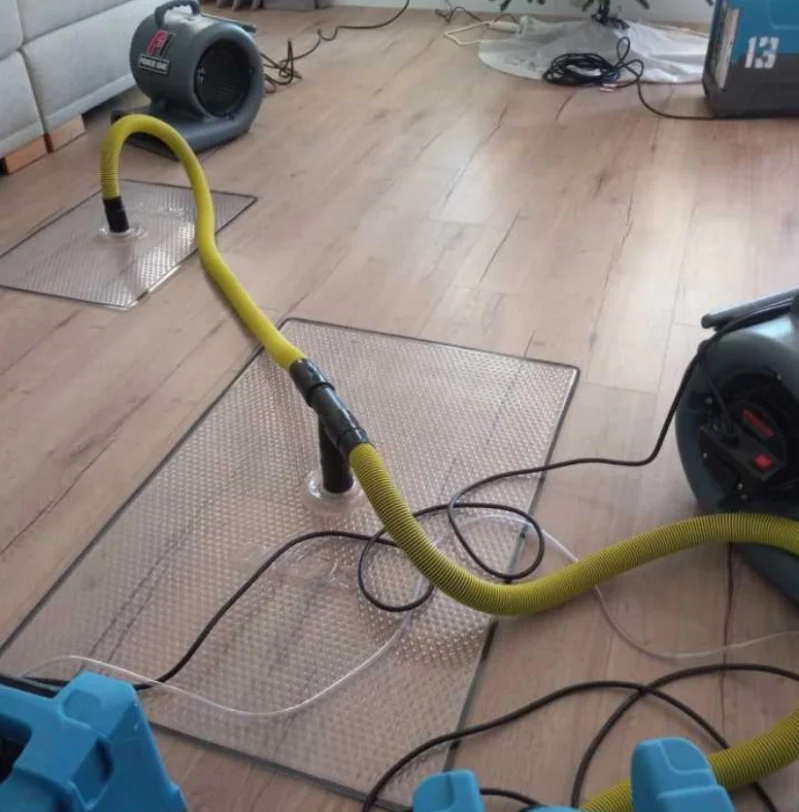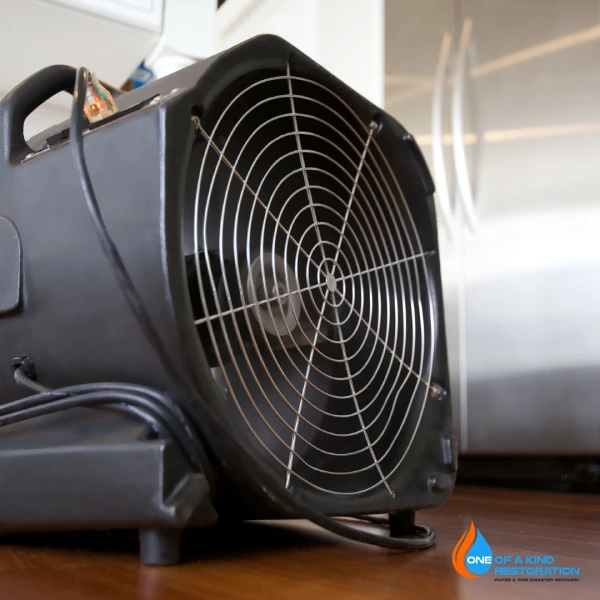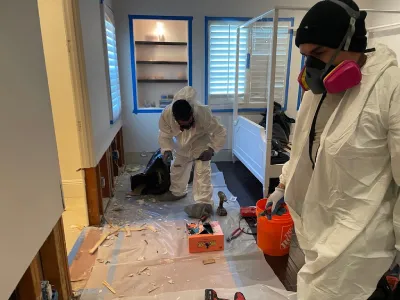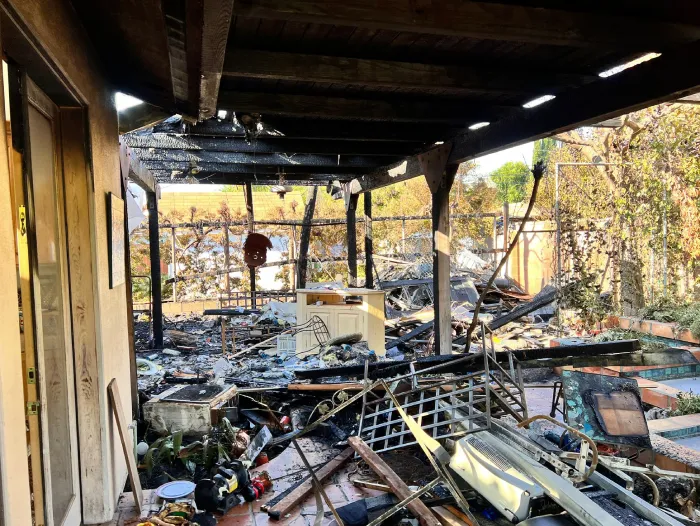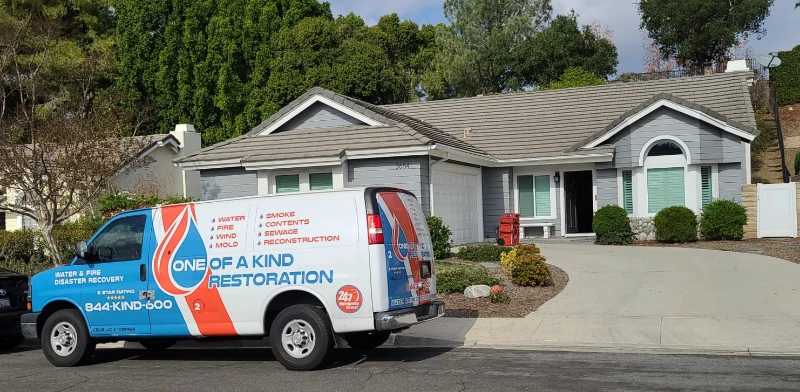The Immediate Consequences of Water Damage: Minutes Matter
Water damage can have immediate and profound effects on your home. In a matter of minutes, the following issues may arise:
1. Contamination and Saturation:
- As soon as water infiltrates your home, it initiates a process of contamination. Any standing water quickly saturates flooring, carpeting, and furniture, causing damage and staining.
- Drywall acts like a sponge, soaking up water. This rapid absorption can lead to structural instability and further complications.
2. Electrical Hazards:
- Water infiltrating electrical outlets or appliances poses an immediate risk of electrical shock or fire.
- Turning off the power supply to the affected area is a critical safety measure.
3. Health Concerns:
- Stagnant water can quickly become a breeding ground for bacteria and pathogens, increasing the risk of health issues for residents. In as little as 24 to 48 hours, mold can start to grow on damp or wet surfaces. This is especially true in areas with high humidity and organic materials, like wood or drywall.
- Immediate action to prevent microbial growth is essential.
4. Flooring Damage:
- In minutes, water can penetrate and warp wooden flooring.
- Laminate or vinyl flooring may begin to bubble or peel due to moisture exposure.
5. Fast Furniture Damage:
- Furniture, especially upholstered items, can absorb water swiftly, leading to rapid damage, discoloration, and distortion.
Preventing Water Damage in Minutes: What Homeowners Can Do
- Immediate Action: When water damage is detected, the most critical step is to take immediate action. Shut off the water source if possible and address any electrical hazards by turning off the power to the affected area.
- Call for Professional Help: Contact a professional water damage restoration service immediately. They have the expertise and equipment to mitigate the damage quickly and effectively.
- Move Belongings: Move valuable belongings, furniture, and possessions to a dry area if safe to do so. This can help prevent further damage.
- Ventilation: Promote air circulation in the affected area to facilitate drying. Use fans and dehumidifiers if available.
- Documentation: Take pictures of the water damage for insurance purposes. Documenting the damage is essential for filing a successful insurance claim.
- Emergency Repairs: Address any immediate issues that can prevent further water intrusion, such as patching up a leak or sealing off a burst pipe.
- Safety First: Prioritize safety for you and your family. Avoid contact with standing water, and if you suspect structural damage, evacuate the area until it is declared safe.
The Escalation of Water Damage: Within an Hour
In the critical first hour following water infiltration, the effects on your home intensify, leading to a host of immediate issues:
1. Swelling Furniture:
- Furniture, especially wooden pieces, rapidly absorb moisture, causing them to swell and distort. This distortion is often irreversible.
2. Rising Humidity Levels:
- As water spreads, it increases humidity levels throughout the affected area. This elevated humidity can contribute to discomfort and accelerate secondary damage.
3. Unpleasant Odors:
- Within an hour, water damage can trigger the onset of unpleasant odors. These odors are often the result of dampness and microbial growth.
4. Fabric Discoloration:
- Fabrics, including upholstery and carpets, may start to bleed colors or become discolored due to water exposure.
5. Potential Structural Damage:
- Water damage can compromise the structural integrity of your home. Wooden components, such as beams and supports, may begin to swell and weaken.
6. Electrical Hazards Persist:
- Electrical hazards remain a significant concern within this hour, especially if the water has come into contact with outlets or appliances.
7. Increased Microbial Activity:
- The environment becomes increasingly conducive to microbial growth, and within 24 to 48 hours, mold and mildew can start to take hold in wet areas. While it may seem dry to someone without specialized training, there’s a possibility that the area retains moisture, providing an ideal setting for mold to develop in just one or two days. However, this initial growth phase may not be visible to the naked eye for another 18 to 21 days.
Preventing Escalation of Water Damage: What Homeowners Can Do
Within the first hour of water damage, taking swift and effective action is crucial:
- Safety First: Continue to prioritize safety. Avoid contact with standing water, and if there is any concern about structural integrity, vacate the area until it is declared safe.
- Professional Help: Contact a professional water damage restoration service if you haven’t already. Their prompt response and expertise are vital for mitigating the escalating damage.
- Move Belongings: If it’s safe, continue moving valuable belongings, furniture, and possessions to a dry area.
- Ventilation: Ensure proper ventilation by using fans and dehumidifiers to reduce humidity levels.
- Documentation: Maintain detailed documentation through photographs and descriptions of the damage for insurance purposes.
- Emergency Repairs: Address immediate concerns such as patching up leaks or stopping the water source.
- Prevent Mold: Mold growth can begin rapidly. Professionals can assess and initiate mold prevention and remediation strategies.
Understanding the rapid progression of water damage within an hour underscores the urgency of taking swift and informed action. Early intervention significantly reduces damage and protects your home’s structural integrity, making a significant difference in the recovery process. Proactive and well-prepared responses are essential to preventing further complications and facilitating a faster and more successful restoration.
The Unfolding Crisis of Water Damage: Over Days
In the span of just a few days, the ramifications of water damage become increasingly severe, creating a full-blown crisis within your home:
1. Mold and Fungal Growth:
- After a day or two, moisture and humidity have already created the ideal conditions for mold and fungi to thrive and grow. They rapidly colonize the affected areas, contributing to potential health hazards.
2. Warping and Structural Damage:
- Solid wood components, including wooden beams and supports, begin to warp and weaken. This can lead to structural instability within the home.
3. Flooring Ruin:
- Hardwood floors are typically ruined by this time, with warping, buckling, and extensive damage. Laminate and vinyl flooring may also experience severe damage, often beyond repair.
4. Paint and Wallpaper Damage:
- Paint on the walls may blister and peel, while wallpaper may start to detach from the surface.
5. Health Risks and Evacuation:
- Homes exposed to water for several days may pose serious health risks. Residents, especially those with allergies or respiratory problems, may have difficulty breathing and face heightened health concerns. In severe cases, evacuation may be necessary.
6. Extensive Repairs:
- The extent of damage by this point often necessitates extensive repairs. In many cases, the property may require gutting and reconstruction from the inside out.
Preventing Escalation of Water Damage: What Homeowners Can Do
When water damage has advanced to this stage, a proactive and informed response remains essential:
- Safety Remains Paramount: Always prioritize safety. Steer clear of standing water, and if there are any concerns about structural stability, evacuate the area until it is declared safe.
- Professional Assistance: Continue or initiate contact with a professional water damage restoration service. Their expertise is indispensable in addressing the escalating damage effectively.
- Document Extensively: Maintain thorough documentation through photographs and detailed descriptions of the damage for insurance purposes.
- Mold Assessment and Remediation: Promptly address the mold issue by enlisting professionals to assess, prevent, and remediate it.
- Comprehensive Repairs: With extensive damage, a complete assessment and reconstruction plan may be necessary. Professionals will outline the required steps to restore your home.
Understanding the severe consequences of water damage over days emphasizes the critical importance of immediate, effective action. Taking prompt measures can significantly limit the extent of the damage, safeguard structural integrity, and lead to a more successful restoration process. Being well-prepared and proactive is essential in preventing further complications and ensuring a faster recovery for your home.
Months: Water Damage’s Long-Term Effects
When water damage remains unaddressed for months, the consequences escalate to an alarming degree:
1. Widespread Mold Infestation:
- Mold has ample time to establish a stronghold throughout the home, infiltrating walls, ceilings, and hidden corners. The property becomes a breeding ground for various molds, including toxic species.
2. Structural Deterioration:
- Prolonged exposure to moisture continues to weaken the home’s structural components, leading to sagging ceilings, unstable walls, and potential structural failure.
3. Health Hazards Persist:
- The persistent presence of mold, coupled with indoor air quality issues, poses severe health risks to residents. Allergies, respiratory problems, and long-term health issues become more prevalent.
4. Costly Remediation:
- Addressing the extensive damage accumulated over months requires substantial remediation efforts. Gutting and rebuilding the property may be the only viable option, incurring significant costs.
5. Irreversible Damage:
- Many components, such as drywall, insulation, and certain structural elements, may be beyond repair, necessitating complete replacement.
6. Occupancy Challenges:
- Properties exposed to water damage for months may become uninhabitable, forcing residents to seek alternative living arrangements.
7. Legal and Insurance Implications:
- The extended neglect of water damage may lead to legal complications and disputes with insurance providers regarding coverage and liability.
Preventing Long-Term Water Damage: What Homeowners Can Do
Preventing or mitigating the catastrophic effects of water damage that has persisted for months requires comprehensive and professional action:
- Safety Continues to Be a Priority: Safety remains paramount, and any concerns about structural integrity or mold infestation should be addressed with professional guidance.
- Professional Intervention: Seek immediate assistance from a qualified water damage restoration service with experience in handling long-term damage.
- Mold Assessment and Remediation: Comprehensive mold assessment and remediation are crucial. Professionals should address the mold infestation, safeguarding your health and property.
- Full Property Evaluation: Comprehensive assessment and evaluation of the damage are essential, and professionals will recommend the necessary steps to restore the property.
Understanding the devastating effects of water damage that has persisted for months underscores the dire consequences of prolonged neglect. Swift and informed action is always vital to minimize damage and protect the structural integrity of your home. While the situation may be dire, being proactive and enlisting professional assistance is essential to prevent further complications and initiate a path to recovery for your property. To learn more about mold removal services in Los Angeles, contact us at any time.
